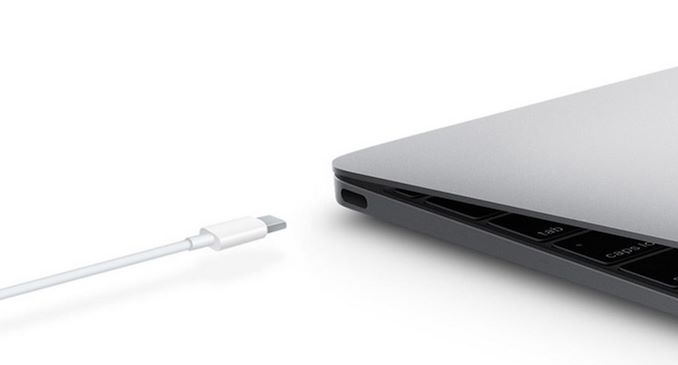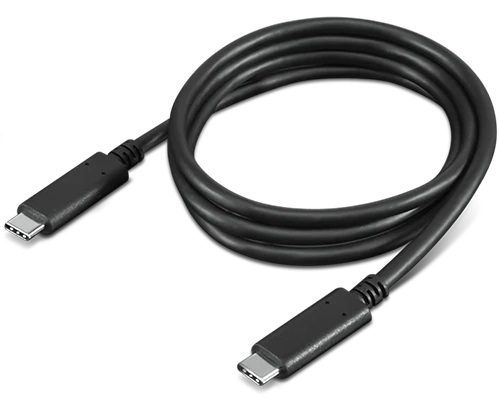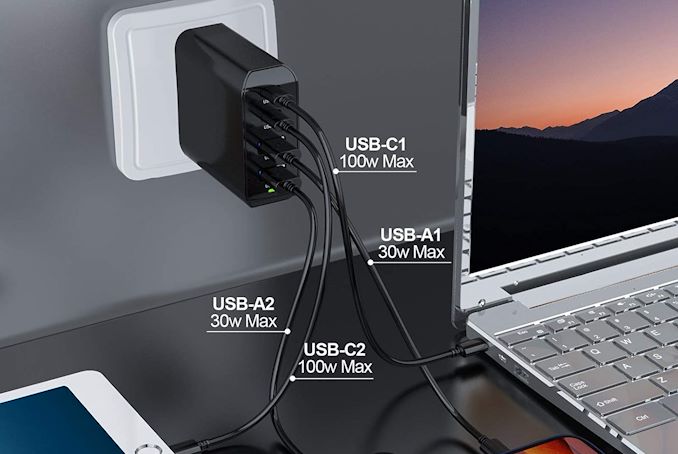USB-C Power Delivery Hits 240W with Extended Power Range
by Ganesh T S on May 28, 2021 8:00 AM EST- Posted in
- USB
- USB PD
- USB-IF
- USB4
- Power Delivery

The USB-IF released a couple of new specifications recently - R2.1 for Type-C and R3.1 for USB-PD. The main update is the 'Extended Power Range' aspect that allows for delivery of up to 240W over Type-C setups supporting the relevant USB-PD profile.
The first USB Power Delivery (USB-PD) specification was released in 2012, and it has seen regular updates over the years. Initially, the focus was on enabling faster charging rates for smartphones and other such devices (which had been using proprietary charging schemes or the USB-BC battery charging specifications). After the release of the Type-C specifications in 2014, USB-PD became a hot topic again. In addition to charging, the attractiveness of a single port for both data and power I/O - particularly from the viewpoint of compact and slim notebooks - brought in the need to shore up the amount of power transferred between a source and a sink. Prior to the release of USB-PD R3.1, certifications from the USB-IF were in place for equipment capable of sourcing / sinking up to 100W (slightly lesser in practical circumstances). The newly released specifications refer to the modes in R3.0 as 'Standard Power Range' (SPR).
USB-PD R3.1 supports three charging models:
- Fixed voltage
- Programmable power supply (PPS), and
- Adjustable voltage supply (AVS).
In the fixed voltage scheme, the Standard Power Range (SPR) mode supports 3A and 5A at 5V, 9V, 15V, and 20V. The 3A configuration supports between 15 and 60W. The 5A scheme requires a specific type of cable and can supply up to 100W. The new Extended Power Range (EPR) mode supports all voltage and current combinations of SPR, and also includes 5A supply at 28V, 36V, and 48V, allowing for support up to 240W.
In the programmable power supply (PPS) scheme available in SPR mode, currents are limited by the source and the cable's advertised capabilities. While the programmed voltage ranges track the ones in the fixed voltage scheme, the actual voltage may vary between 3.3V and 5.9V (for the 5V setting), 11V (for the 9V setting), 16V (for the 15V setting), and 21V (for the 20V setting) in steps of 20mV.
In the EPR mode, the AVS model allows for the voltage to be adjusted between 15V and one of 28V, 36V, or 48V in steps of 100mV depending on the negotiated EPR contract. The source and sink need to enter this specific EPR mode and the cable between them also needs to support EPR for these new voltages to be enabled.
EPR specifications keep safety in mind by allowing sources to scale back to 5V with a hard reset in case of unresponsive downstream sinks. The sink is also required to keep up periodic communication with 'keep-alive' messages to the source in this mode.
Cables supporting EPR need a compulsory electronic marking indicating EPR compatibility using 'EPR Mode Capable' bit set. Standard Power Range cables (SPR) support only up to 100W PD. Receptacles and cables supporting EPR need extra mechanical considerations to prevent shorting / arcing during the connection process. Towards this, the mechanical specifications of the cables as well as receptacles are getting updates. Arcing is possible during unplug operations, and this is being mitigated by length differences between the CC and VBUS pins (allowing the detection of disconnect events early enough to get the source to reduce the current prior to the full disconnection). A snubber capacitor at either cable end is recommended to help with this feature.
EPR enables supply of up to 5A at 48V, but the cables themselves need to support up to 53.65V, and the capacitors used need to be rated for 63V. The electronic marking on the cables are supposed to specify 50V/5A with visible EPR identification icons for end users.
Thumb drives sinking more than 3A or supporting USB4 operations are now mandated to respond to 'cable identity' queries from the host. Additional constraints / parametric adjustments have been made for cables to be fit for USB4 operations. The certification requirements for USB4 active cables have also been updated. They are now required to support Thunderbolt 3 capabilities fully (including Alternate Modes). Since these certification requirements are new, and do not specify updates for passive cables, it is possible that USB4 passive cables that support full capabilities when used with modern USB4 hosts may not operate at full speeds with legacy Thunderbolt 3 platforms.
USB-PD has enabled the use of a single Type-C port for both data and power I/O. In its previous avatar, this worked well for mobile devices such as smartphones and tablets - allowing them to even double up as power banks. In parallel, advances in Gallium Nitride (GaN) semiconductors have enabled the creation of very efficient and compact power electronics equipment.
Combined with the new USB-PD specifications allowing for up to 240W of power delivery, we will soon see USB-C chargers / adapters capable of powering desktop PCs (such as the Intel NUCs - even the gaming-focused models) and All-in-Ones. Currently, these systems still use wall-warts with DC-in barrel jacks to power the internal components. With solutions in sight for this inconvenience, such powerful systems are bound to see new applications.
Source: USB-IF












54 Comments
View All Comments
dotjaz - Friday, May 28, 2021 - link
>A 240W rated cable is, very likely, going to be quite stiff, if it is going to meet safety standards.Nope. A 240W rated cable is EXACTLY as stiff as 100W to meet safety standards because the cable part is identically specced. The cable part isn't rated by power but only currents - still at 5A, and there is no practical insulation difference between 24V and 48V not at 5A. What will be different is you'll have two bulkier connectors attached to the same cable.
>And then there are going to be consumers that will get confused when the charger/cable they bought doesn't work with their 240W consumption device, despite it being plug compatible.
That's a non-issue again. It will work, at reduced power. Every single cable I bought lists explicitly what wattage it supports, and 100W cables all have bulkier connectors and thicker cables (for 5A). The 48V connectors would need special certification and marks on them just like Thunderbolt). If you are confused about a 60W cable (thin cable with no emark/smaller connector) not being able to charge at 240W, you shouldn't be using whatever you are trying to charge.
dotjaz - Friday, May 28, 2021 - link
Because those are most likely smart devices with a screen that'll certainly tell you the cable isn't rated 240/100W. All current laptops I've seen already do that.futrtrubl - Friday, May 28, 2021 - link
It's an option, if you don't need 240W don't get a 240W charger or cable. Just like if you don't need 100W then get the smaller charger and cable. However, if you do need 240W then the charger and cable are going to be no bigger and stiffer than a non-USB 240W charger and cable so you loose nothing.As to customer confusion this actually does something for that with marking of cables, sources and sinks.
danbob999 - Friday, May 28, 2021 - link
Nobody is forcing you to buy a 240W charger, but yes, we need it.Many laptops need more than 100W to actually charge the battery while using the system at full load.
Currently, USB-C charging is limited to thin and light laptops because of the 100W limitation.
Xajel - Friday, May 28, 2021 - link
> A 240W charger is going to be massive, even with GaN tech.240W is the upper limit, most laptops don't require 240W chargers, even high-end office-grade laptops requires a maximum of 130W (like the XPS 17), Only gaming laptops requires such higher power which is expected duo to the GPU included. Yet some laptop manufacturers (Lenovo please read this), supply an enormously bulky 230W with relatively no-so-powerful laptops that might in extreme cases requires 130W (maybe 150W max) (like the new still not available ThinkBook 16p).
Basically, only a charger with enough power to charge your laptop and maybe some other gadgets you have. But I would take a single charger with me anytime instead of carrying 2-3 chargers!!
> A 240W rated cable is, very likely, going to be quite stiff, if it is going to meet safety standards.
It should be that much, the cables kept the same 5A current which is the main concern to use thicker metal wires, but they will however require slightly better insulation for the higher voltages. The only concern is about the capacitors, and if a laptop doesn't support Type-C charging and requires 20V of higher current (like 11A), then a bulky external step-down voltage regulator will be required.
AdrianBc - Friday, May 28, 2021 - link
Any 17 inch mobile workstation laptop or gaming laptop requires at least 150 W (105 W + 45 W) continuously only for the GPU + CPU (which consume more than 200 W for short times) not counting any other components, e.g. display, DRAM and SSD.So the chargers for such laptops start at 180 W. Moreover also in previous years, but more frequently with Comet Lake and Tiger Lake, the TDP for the CPU is raised to 65 W, raising the power for GPU+CPU to 170 W, which leads to a total power of at least 200 W.
So 240 W should be enough for any laptop, but most 17 inch laptops would not be content with much less than this.
andyo - Saturday, May 29, 2021 - link
"240 W" cables are still going to be 5A cables, there's no reason for them to be thicker than the ones already available. The physical changes are in the connectors and the capacitors as indicated in the article, and the data in the chip.Eliadbu - Saturday, May 29, 2021 - link
Do we need 240W PD? Depends on your devices but some users that have bulkier and more power hungry laptop will definitely love to ditch the proprietary charger that you can only use and be able to use other chargers maybe more compact ones that fit your laptop voltage and current requirements.grant3 - Sunday, May 30, 2021 - link
"Do we really need 240W PD?"We certainly need higher than the current 100w standard. 240w is a good next step.
"A 240W charger is going to be massive"
Yes, existing 240w AC/DC converters are large, and will continue to be large. So what? The point of this standard is not to make power supplies smaller. The point is to standardize cables & ports to support higher power delivery.
"A 240W rated cable is, very likely, going to be quite stiff"
Maybe, and if that becomes a problem for anyone, they can choose not to use 240w rated cables.
Valantar - Sunday, May 30, 2021 - link
... and? Is any of that actually an argument for not implementing this? Chargers for laptops of this wattage are already huge. This isn't making them any bigger, but it does make them standardized and far easier to service and replace. A 65W charger will always be smaller and lighter than a 240W one, but that hardly helps when your gaming laptop consumes 150-200W under load and you want to charge it while in use (or even not drain the battery while in use). You're trying pretty hard to make a problem where there isn't one.As for cables, they don't really need to get much thicker - they'll need a bit better insulation for the higher voltages, but the current is still 5A, so no more copper is needed. They're likely to be very similar, but more expensive due to the stricter specification.